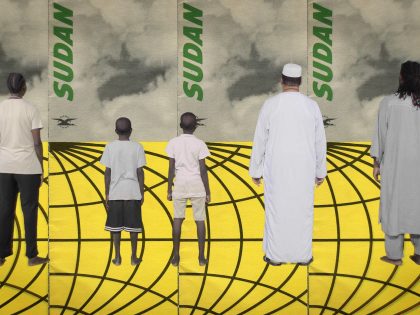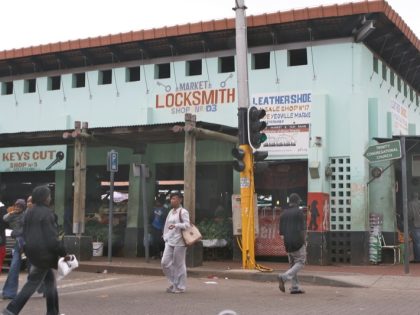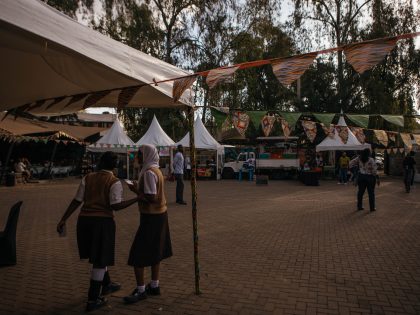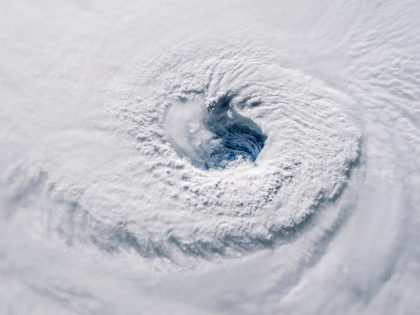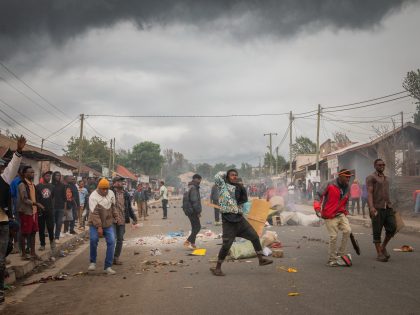The Vershtunkende Toronto Zoo
'Vershtunkende' is a Yiddish adjective loosely translated as ‘darned,’ ‘exasperating’, ‘maliciously idiotic’. It is not a nice word to use for either a person or thing.

Photo: Melissa Levin.
The sprawling Toronto Zoo clearly never heard about the controversy surrounding the German Augsburg Zoo’s experience of setting up an “African village” in the summer of 2005. If they had, perhaps they would’ve been more circumspect before hosting one of their own.
The Toronto Zoo is like a North American suburb for animals. It’s sprawling and charmless with domesticated inhabitants either at peace with their lot or chomping at the bit to flee its confines. There are many reasons to stay away from zoos according to those who promote the rights of animals. I have a fair reason for going – an outdoor activity for the kid even in the dead of winter. And my good reason is that the right-wing Toronto mayor is eager to slash its subsidies along with pretty much everything else the city supports beside private property and policing it. (On Rob Ford labeled as rightwing: I was about to call Rob Ford moronic or idiotic or cerebrally challenged, but in deriding his capacity for thoughtfulness, we mask his politics, his ideology, normalize it as the stuff of white male suburban-ness. It might be normalized. But it needn’t be normal. Public space is under attack under the weight of his austerity drive. And the push-back should be more determined and considered than fixating on his stupidity.)
So, we go to the zoo. It was a steaming hot day in this stereotypically frigid place. And in this zoo, this place where animals are displayed for urban dwellers and other humans who don’t encounter nature much anymore, in this zoo, in its Africa section, we happened upon an African marketplace. Between the slumbering rhinos and the ferocious meatball eating cheetah was a stall selling African curios and fabrics. I have been bothered in the past by the little hut that is usually there denoting a ubiquitous African living space, at one with nature.
The kid and I have giggled that the zoo people have clearly never been to say, Windhoek (where even Angelina and Brad have been) because then they’d have to have other types of African buildings too, like houses, and apartment blocks, churches and shacks. But maybe those are associated with a modernity that doesn’t belong on the continent of huts and naturalness. Of course the zoo is a place of commerce and money-making. There are shops near the entrance that sell over-priced stuffed toy animals and other mementoes from the day at the zoo to over-indulged kiddies from over-wrought caregivers. But these are spaces clearly demarcated from the great outdoors by their air-conditioned environs and their location at the zoo’s entrance/exit. There is also no cultural spectacle attached to the consumptive imperative of the Zoo shop. Not so much with the African curios. Curious indeed.
The Toronto Zoo, apparently ‘back’ by virtue of ‘popular demand’, saw fit to host an ‘African Arts and Culture Festival’ from June 30 to September 3 2012. On its website, the zoo promises that “[t]raditional and contemporary artists will transform the African Savannah landscape of the Zoo into an interactive Market Place for our visitors to learn and engage in the African experience.” Considering the context and some of the signage, the lessons learned by visitors would be to associate Africa and Africans with wild and untamed nature, with cultural production deeply rooted in their feral habitat. The Augsburg Zoo’s African Festival was met with outrage; Toronto’s with apparent enthusiasm. No doubt this is also a contextual response. German history has come to demand increased appreciation of the ways in which stereotyping can participate in producing justifications for grotesque human acts (although guest workers and their descendants may not believe that). Toronto, on the other hand, regards itself as a multicultural fantasy-land.
While the idea of multiculturalism can force us to think of opportunities for change and dynamism as we figure out new ways of being conscious and living together, it all too often permits us to lazily inhabit the realms of stasis. What I mean by this is that ‘culture’ often stands in for the more antiquated, discredited and odious pre-occupation with biology. Culture is understood to be as genetically determinant as race once was. It operates in a similar way to racism; although of course theoretically we can immerse ourselves in ‘different’ cultures and adopt them. This is still limited though by the cultural heritage that runs through our veins, like blood: the schnorrer Jew by virtue of culture, of generations of miserliness, not of genetic codes; or the philandering black man by virtue of tradition that has become nature rather than omnipotently ordained proclivity. It is not racist per se. But we could consider it to be neo-racist.
In case it’s not offensive enough to display the products of hard labor aside the scent of elephant shit, the Toronto zoo in its wisdom had a collection of Southern African art on display too. The display was beautiful, shaded by willows, whose weeping was perhaps for the association of this artwork with a vershtunkende zoo. Not far from there is a permanent display of Inuit and First Nations art. Seems the place for indigenous talent, like its African counterpart, is in the zoo. And there we thought the final word on noble savagery could be given to Joseph Conrad.
Recently, the Toronto Zoo imported penguins from Cape Town. There was a bit of a brouhaha when they arrived as two of the male penguins shacked up… but heteronormativity and the pre-occupation with breeding in penguin-land has subsequently been re-established. This summer, two white lions from Timbavati joined the other creatures from the African Savanna in Toronto. The African elephants have been all over the news these past few months as a battle ensues as to where best they should retire (stay in Toronto or head to California). And into this growing family of African animals, come the humans, their crafts and their music. Call me sensitive, but given the history of denigration of the African continent and the people who live there, a zoo seems a particularly inappropriate space for the promotion of African arts and culture.
On a separate but equally offensive note, the kid and I also went to see the exciting “Giants of Gondwana” exhibit at the Royal Ontario Museum (ROM). Neither of us knew though just how old Africans are. We were gratefully enlightened by the ROM store that had its dinosaur wares on sale decorated by African masks and carvings. Gondwana, the supercontinent of the South, was home to some of pre-history’s largest creatures like Tyrannosaurus Rex. They were wiped out during the Cretaceous-Paleogene extinction event some 65 and a half million years ago. According to the museum store display, transporting African crafts back millions of years is an acceptable articulation of Africans outside of time, outside of history.













